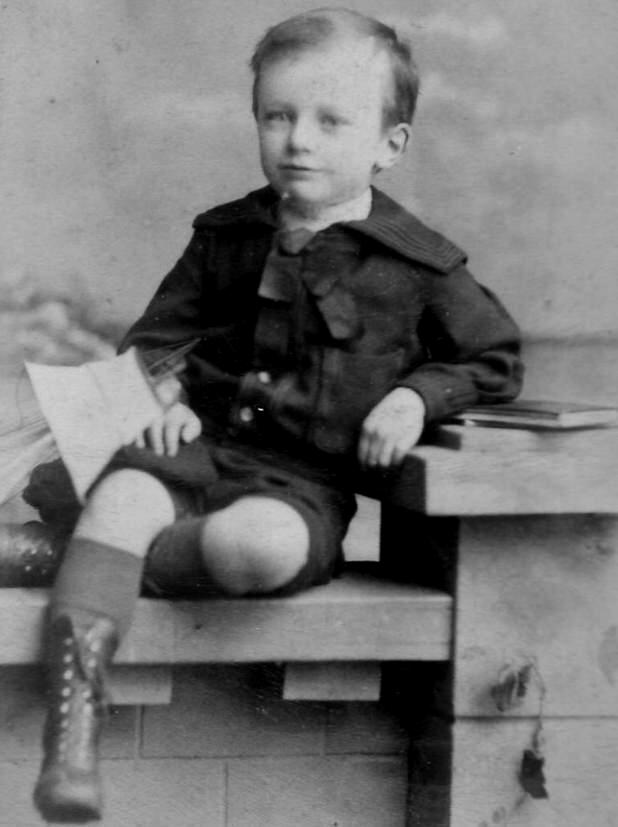
Figure 1.--This unidentified English boys wears knee socks with a knickers suit. The CDV portrait is undated, but looks like the 1880s to us. The studio was the Thos. B. Howe studio in Newbury and Hungerford. |

|
We see English boys wearing knee socks in the 19th century, but not very commonly. The first knee socks we note were worn with Scottish kilts. Scottish fashions became popular in England during the early-19th century and Queen Victory helped fuel the Scottish craze. Scottish outfits were nor a specifically boy's style. Scottish knee socks were often argyles. We do not notice other knee socks until after mid century. We notice children wearing socks, at first with dresses, both three-quarter socks and knee socks. Then we see younger boys wearing knee socks with knickers and knee pants. Unlike America where most boys wore long stockings, we see many English children wearing socks, including knee socks. Older boys wore long stockings although in many cases boys seem to have worn knee socks that were pulled all the way up rather than the longer-length stockings we note in America and Germany. Knee socks became much more popular in the 20th century. We note many boys wearing knee socks pulled up with knee pants in the early 20th century. The knee was covered, but barely. Knee socks were common in England right from when short trousers became the common fashion after World War I in the 1920s. Long stockings virtually disappeared for boys, but some girls still wore them. English boys commonly woreknee socls throughout the inter-War era. We begin to see boys wearing ankle socks during the summer in the 1930s, but knee socks continued to be common into the 1960s. By the 1970s, short trousers and knee socks became more associated with schoolwear and Cubs. Tube socks were popular for a while. By the end of the century, boys no longer wore knee socks to any extent and they had even brgun to decline as schoolwear, in part because fewer boys were wearing shorts to school.
We see English boys wearing knee socks in the 19th century, but not very commonly. The first knee socks we note were worn with Scottish kilts. Scottish fashions became popular in England during the early-19th century and Queen Victory helped fuel the Scottish craze. Scottish outfits were nor a specifically boy's style. Scottish knee socks were often argyles. We do not notice other knee socks until after mid century. We notice children wearing socks, at first with dresses, both three-quarter socks and knee socks. Then we see younger boys wearing knee socks with knickers and knee pants. Unlike America where most boys wore long stockings, we see many English children wearing socks, including knee socks. It often no clear if boys are wearing kne socks or long xtockings. Older boys wore long stockings although in many cases boys seem to have worn knee socks that were pulled all the way up rather than the longer-length stockings we note in America and Germany. Knee socks became much more popular in the 20th century.
We note many boys wearing knee socks pulled up with knee pants in the early-20th century. The knee was covered, but barely. We are unsure whether to call this hosiery knee socks knee socks or long stockings. But in fact, turn-over-top knee socks were essentially the same as long sockings, especilly when boys were wearing knee pants or long short pants. In fact the English had different terms over time, including long socks and school socks. Knee socks were common in England right from when short trousers became the common fashion after World War I in the 1920s. Long stockings virtually disappeared for boys, but some girls still wore them. English boys commonly wore knee socls throughout the inter-War era. This was usually turn-over-top socks. We begin to see boys wearing ankle socks during the summer in the 1930s, but this needs to be confirmed. Boys wearing sandal might wear them without socks. The knee socks with patterns at the top generally disappear by the 60s, but school socks with color tops or bars become increasongly popular.We note cheaper knee socks appearing in the 1950s, especially the late-50s. These were knee socks that just cane to the knee and did not have the extra turn-over-top bit or cuff. They were also often lighter weights. These becme popular for children at state schools, many of which began requiring uniforms. Knee socks continued to be common into the 1960s. By the 1970s, short trousers and knee socks became more associated with schoolwear and Cubs. Tube socks were popular for a while. By the end of the century, boys no longer wore knee socks to any extent and they had even begun to decline as schoolwear, in part because fewer boys were wearing shorts to school. By the 80s we rarely see boys wearing knee socks excpt as part of school or Cub uniforms.
Navigate the Boys' Historical Clothing Web Site:
[Return to Main English knee socks page]
[Return to Main English hosiery type page]
[Return to Main knee sock country page]
[Return to Main English hosiery page]
[Return to Main English garment page]
[Introduction]
[Activities]
[Biographies]
[Chronology]
[Clothing styles]
[Countries]
[Photography]
[Topics]
[Bibliographies]
[Contributions]
[FAQs]
[Glossaries]
[Images]
[Links]
[Registration]
[Tools]
[Boys' Clothing Home]
